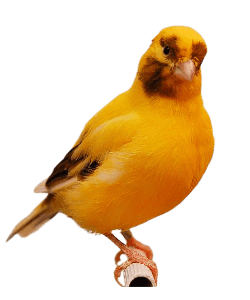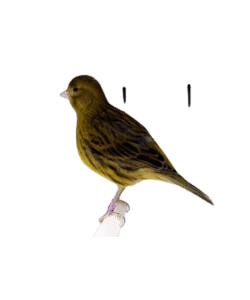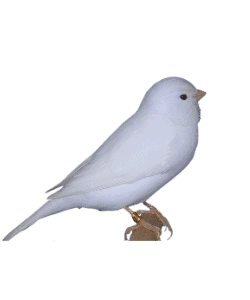Fife Canary Bird
The fife canary bird is a small, lively bird that originates from the island of Fuerteventura in the Canary Islands. This cheerful little bird is usually yellow or green in color, and is known for its beautiful singing voice.
Fife canaries were originally bred for their song, and are still prized for their vocal abilities today. These birds are relatively easy to care for and make great pets, although they can be quite noisy!
Introduction

The adult male has a bright yellow plumage with black streaks on the head, breast and back. Females are usually pale yellow or greenish-yellow with little to no black markings. Both sexes have brown eyes and orange-colored legs. However, now these birds come in variety of colors as they have been paired with different types of canaries.
The fife canary is a popular pet bird due to its beautiful plumage and melodious song. They are relatively easy to care for and can live for up to 15 years with proper care. Canaries are social birds and do best when kept in pairs or small groups. They require a nominal cage or aviary with plenty of perches and toys for amusing themselves. A diet of fresh fruits, vegetables and a good quality seed mix will keep your fife canary healthy and happy.
History

The fife canary is a small bird, measuring only 4-6 inches in length. The plumage of the fife canary is yellow, with a white breast and orange markings on the wings. The beak of the fife canary is black, and the legs and feet are pink.
The fife canary is a social bird that enjoys being around people. This Canary will often sing when it sees or hears people, and will sometimes even perch on their shoulder. The fife canary is an intelligent bird that can be trained to do simple tricks.
The lifespan of the fife canary is 5-10 years. These birds are relatively hardy and do not require much special care. However, like all pet birds, they should have regular checkups with an avian veterinarian.
The fife canary makes an excellent pet bird for first-time bird owners or those looking for a low-maintenance pet. These birds are beautiful to look at and their cheerful singing will brighten up any home.
Breeding

The most important thing to remember when breeding fife canary birds is to make sure that they have plenty of space. They also need to have access to water and food at all times. It is also important to make sure that the temperature in their environment is not too hot or too cold.
If you live in an area where the winters are very cold, you will need to provide heat for your fife canary birds.
In addition, the overall process for the breeding of fife canary bird is same as other canaries. You can pair this beautiful bird with same species and as well as with a border fancy canary as well.
Singing

The first recorded mention of these birds was in the year 1560 when they were brought to the island of Majorca off the coast of Spain. Majorca was (and still is) a major breeding ground for canaries, and it is thought that the fife canary was developed from crosses between local wild Canaries living on Sardinia with other Canary breeds brought over from Majorca.
These days, fife canaries are still bred primarily for their singing ability. These birds have clear voices that carry well and have a wide range of notes. Male fife Canaries are usually the better singers, but females sometimes sing as well. In general, though, if you want a fife Canary as a pet for its singing abilities, you should get a male bird.
Health
When it comes to the health of your fife canary, there are a few things you should keep an eye out for. One is bumblefoot, which is an infection of the foot that can be caused by a number of things, including dirty cage conditions, perching on cold or wet surfaces, or injury. If you suspect your bird has bumblefoot, take him to the vet immediately.
Another thing to watch for is feather stubble. This happens when feathers don’t shed properly and new feathers start growing in before the old ones have fallen out. This can be painful for your bird and may make it difficult for him to fly or perch properly. If you see any feather stubble, again, take him to the vet right away.
Finally, canaries are susceptible to a number of diseases that are common to all birds. These include respiratory infections, gastrointestinal problems, and parasites. Keep an eye out for any unusual symptoms and take your bird to the vet if you’re concerned about his health.
| Image | Title | Price | Buy |
|---|---|---|---|
Top | 2 Packs of Vita Seed Canary Food, 2 Pounds Each | Buy Now | |
 | Kaytee Forti-Diet Pro Health Canary & Finch Pet Bird Food, 2 Pound | Buy Now | |
 | Wild Harvest B12492Q-001 Canary and Finch Food Blend, One Size | Buy Now | |
 | Sweet Harvest Canary Bird Food, 4 lbs Bag - Seed Mix for Canaries | Buy Now | |
 | Hagen Canary Staple Vme Seed, 3-Pound | Buy Now | |
 | Schoen Farms Premium Canary Seed for Birds (5 LBS) | Buy Now |
Fife Canary Bird As a Pet
If you are thinking about getting a pet fife canary, there are a few things you should know first. Fife canaries make good pets, but they require some special care.
First of all, fife canaries are not like other pet birds. They are very active and playful, and they need a lot of space to fly and play. A small cage is not going to be enough for a fife canary. They need at least a normal size of cage, and even then they will still need time out of the cage every day to exercise however, it’s not necessary if you are not preparing it for the singing competition.
Second, fife canaries are not easy to potty train. They will probably make a mess in their cage no matter what you do. It is important to have patience and to be prepared to clean up after your fife canary on a daily basis.
Third, fife canaries are very social birds and they need a lot of interaction with humans. They like to be around people when they are eating and drinking. If you do not have time to spend with your fife canary every day, then he is probably not the right pet for you.
Fourth, fife canaries require special food (seed mixes specifically for canaries), toys, and supplements. Additionally, many vets do not have experience caring for canaries and may charge more for office visits or treatments.
Overall, fife canaries make great pets for the right owner. If you have the time and patience to care for one properly, then he will bring you years of enjoyment.
FAQs
Q: What is a fife canary bird?
A: The fife canary is a small, singing bird that is popular as a pet.
Q: Where does the fife canary come from?
A: The fife canary originates from the Canary Islands.
Q: How big does a fife canary get?
A: A full-grown fife canary will be about 6 inches long.
Q: What does a fife canary look like?
A: Fife canaries are usually yellow or green in color. They have black stripes on their heads and wings, and their tails are forked.
Q: What does a fife canary bird eat?
A: A healthy diet for a fife canary includes seeds, fruits, and vegetables. Commercial bird food mixes that are formulated for canaries are also available and are a good option.
Q: How do I train my fife canary bird to sing?
A: Like all birds, practice makes perfect! Provide your fife canary with plenty of opportunities to sing, such as when you wake up in the morning or before bedtime. You can also try playing music for your bird to listen to.
Q:: What is the lifespan of a fife canary bird?
A:: If well cared for, a fife canary can live for 10 to 12 years.

